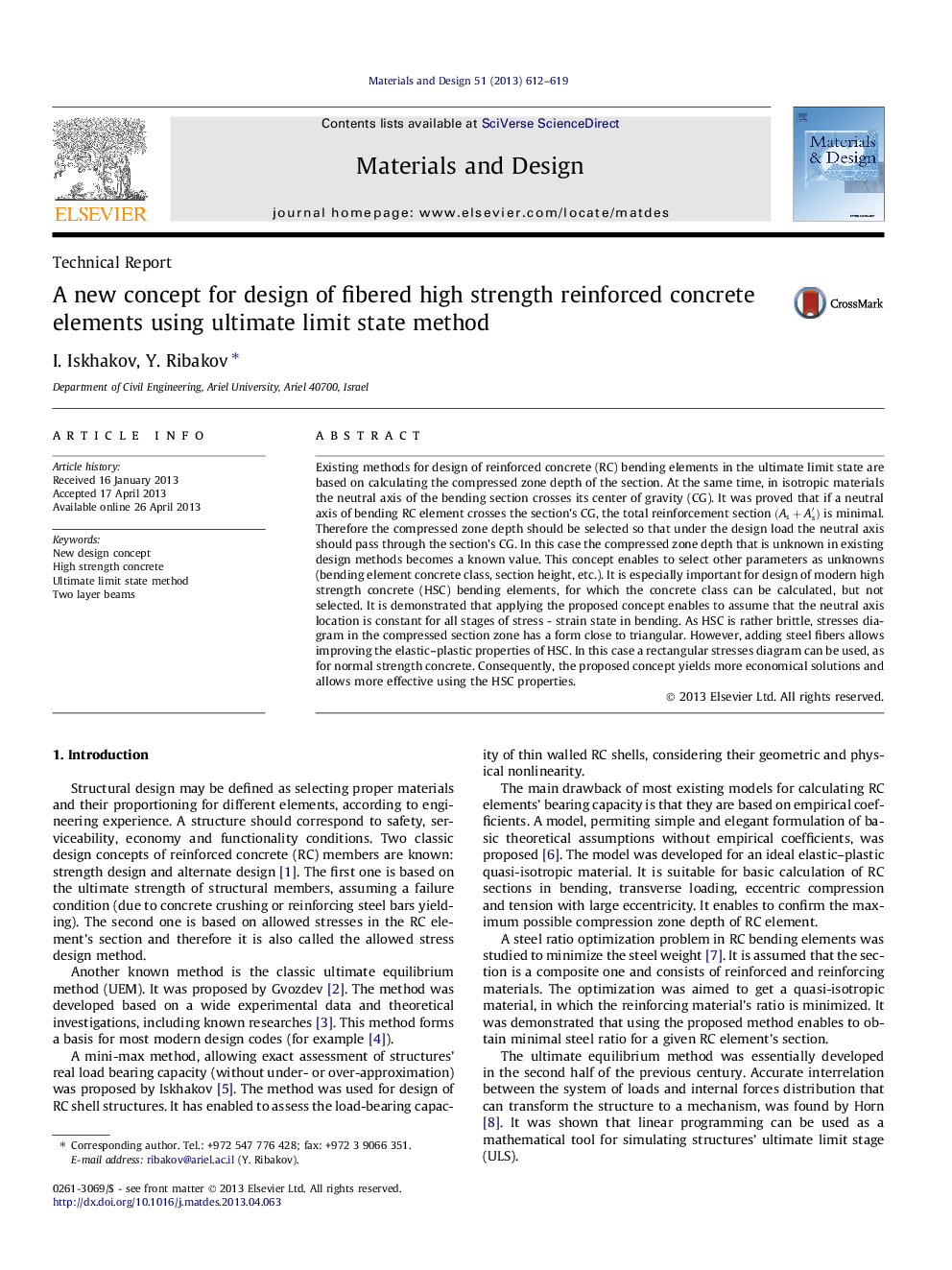| Article ID | Journal | Published Year | Pages | File Type |
|---|---|---|---|---|
| 829880 | Materials & Design (1980-2015) | 2013 | 8 Pages |
•A new concept for design of two layer reinforced concrete beams is proposed.•Concrete class and section height of bending elements are calculated.•Good correlation between experimental and numerical results is obtained.
Existing methods for design of reinforced concrete (RC) bending elements in the ultimate limit state are based on calculating the compressed zone depth of the section. At the same time, in isotropic materials the neutral axis of the bending section crosses its center of gravity (CG). It was proved that if a neutral axis of bending RC element crosses the section’s CG, the total reinforcement section (As+As′) is minimal. Therefore the compressed zone depth should be selected so that under the design load the neutral axis should pass through the section’s CG. In this case the compressed zone depth that is unknown in existing design methods becomes a known value. This concept enables to select other parameters as unknowns (bending element concrete class, section height, etc.). It is especially important for design of modern high strength concrete (HSC) bending elements, for which the concrete class can be calculated, but not selected. It is demonstrated that applying the proposed concept enables to assume that the neutral axis location is constant for all stages of stress - strain state in bending. As HSC is rather brittle, stresses diagram in the compressed section zone has a form close to triangular. However, adding steel fibers allows improving the elastic–plastic properties of HSC. In this case a rectangular stresses diagram can be used, as for normal strength concrete. Consequently, the proposed concept yields more economical solutions and allows more effective using the HSC properties.
